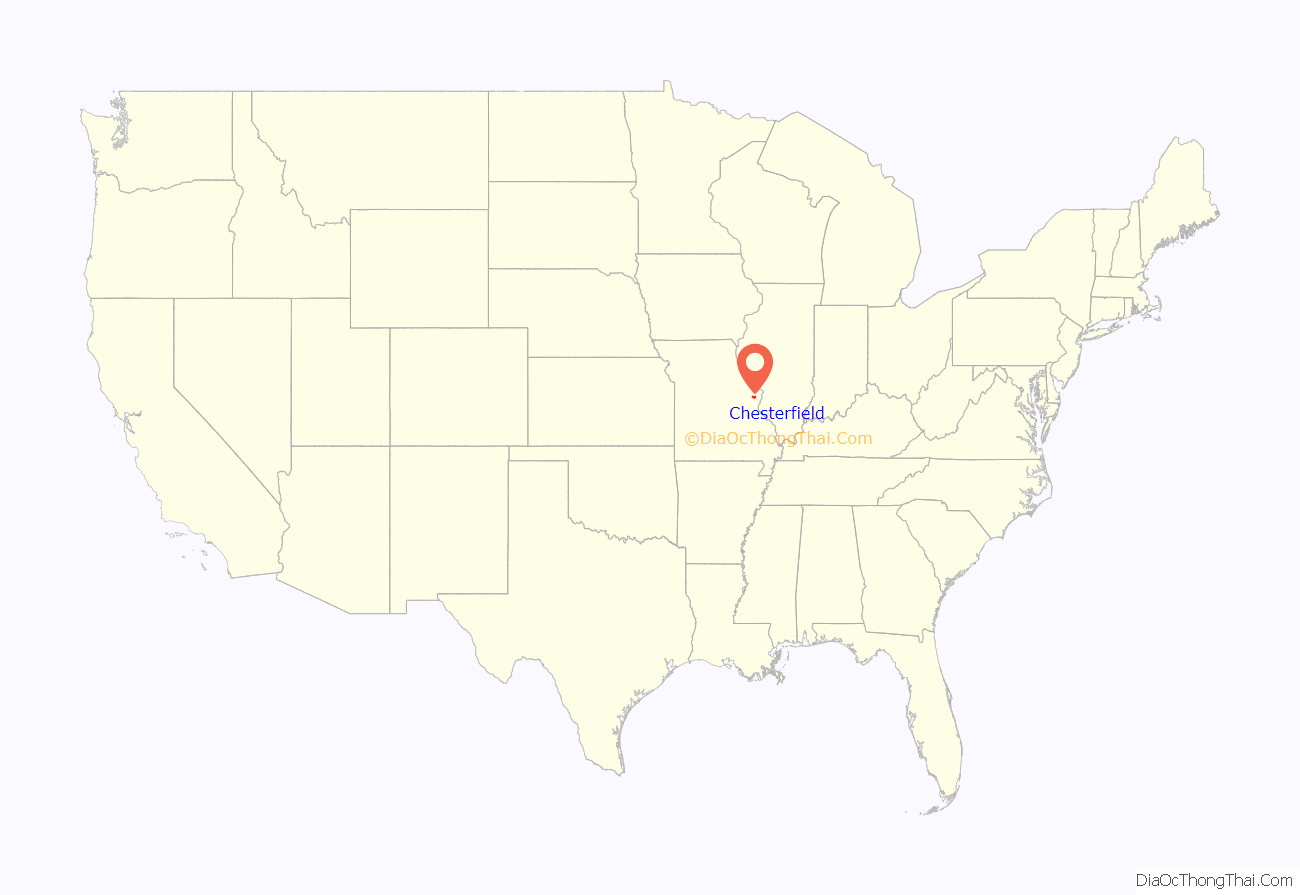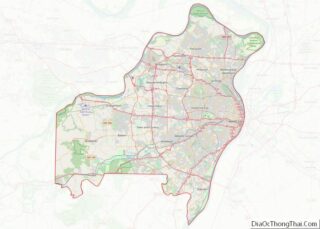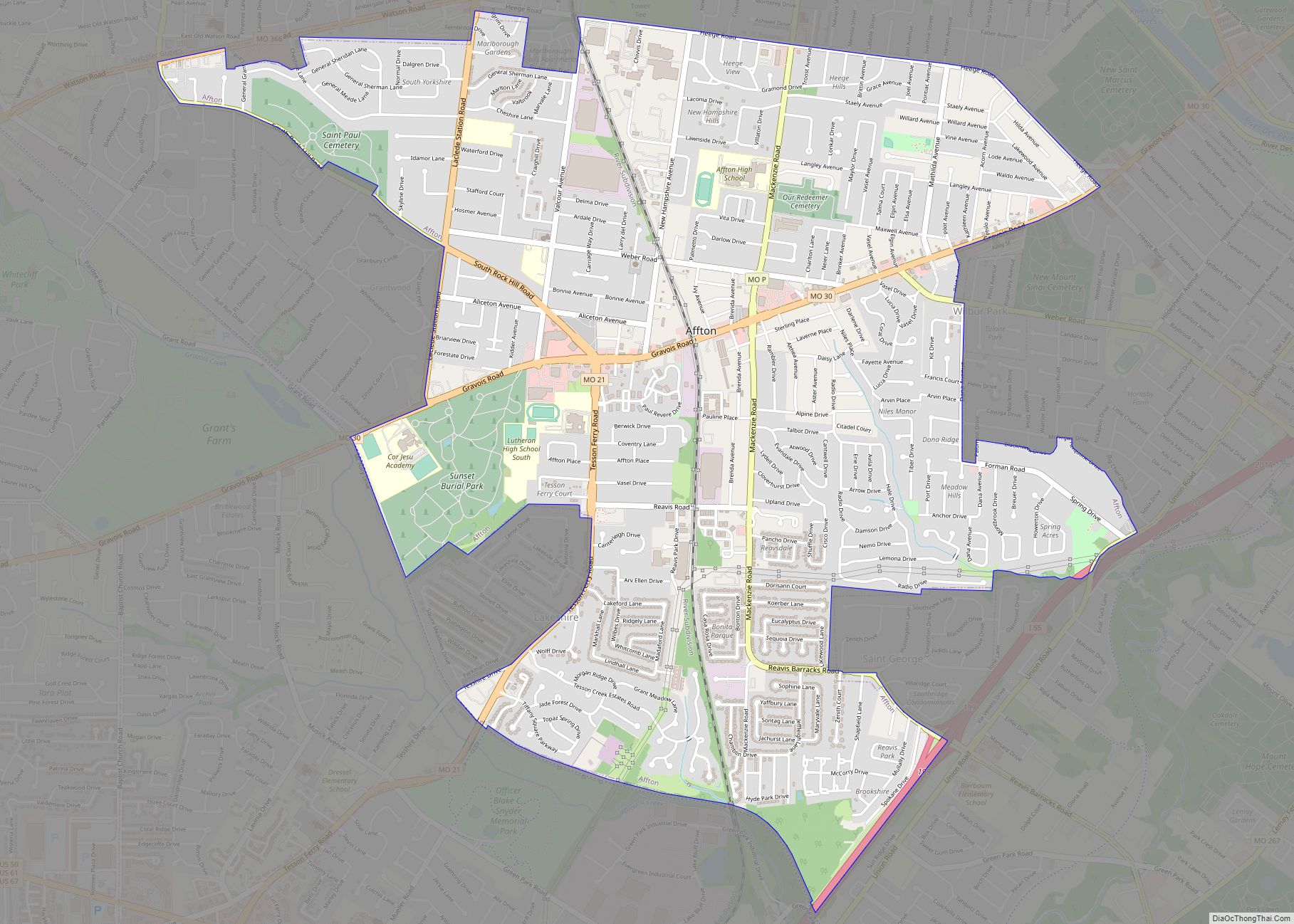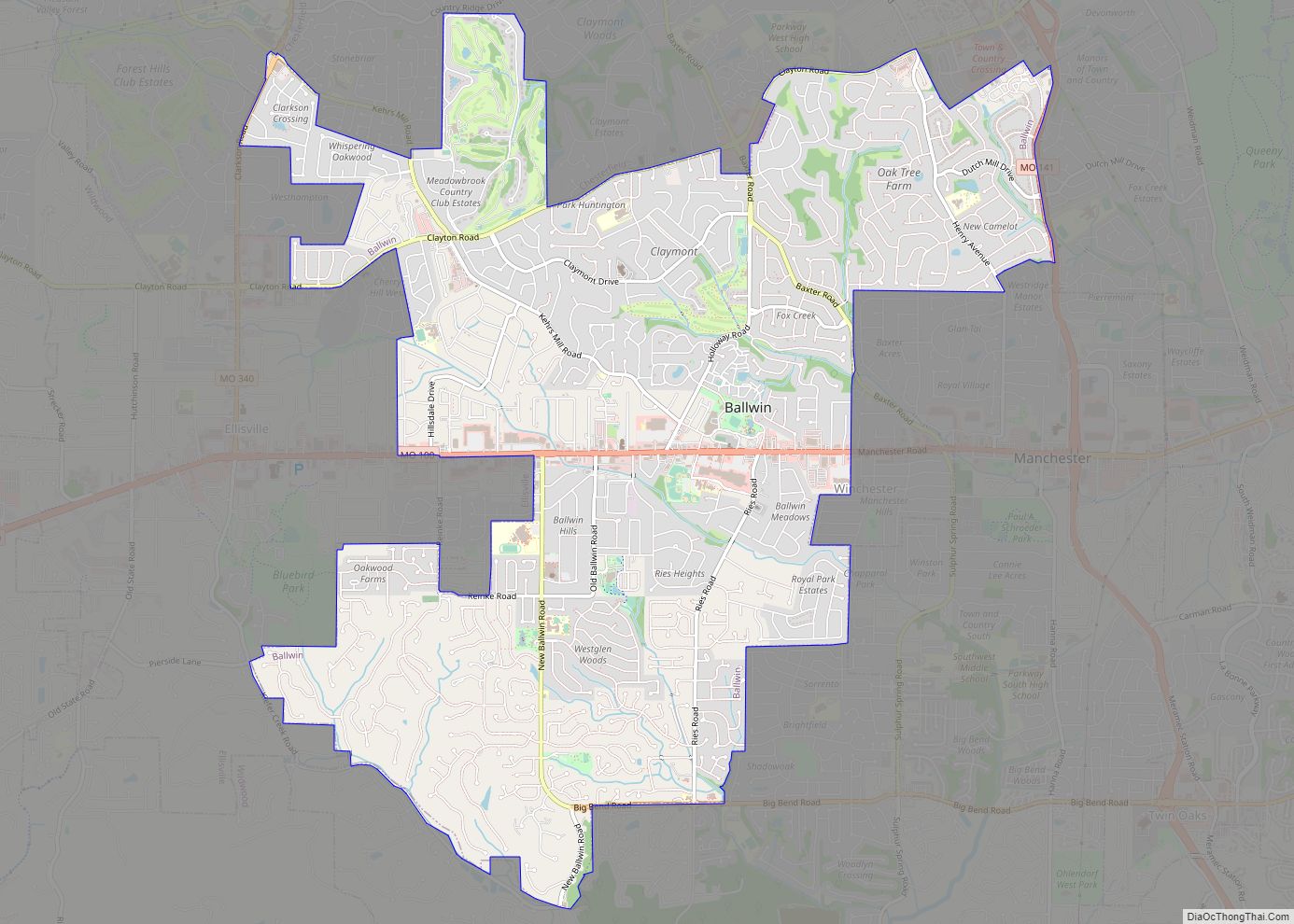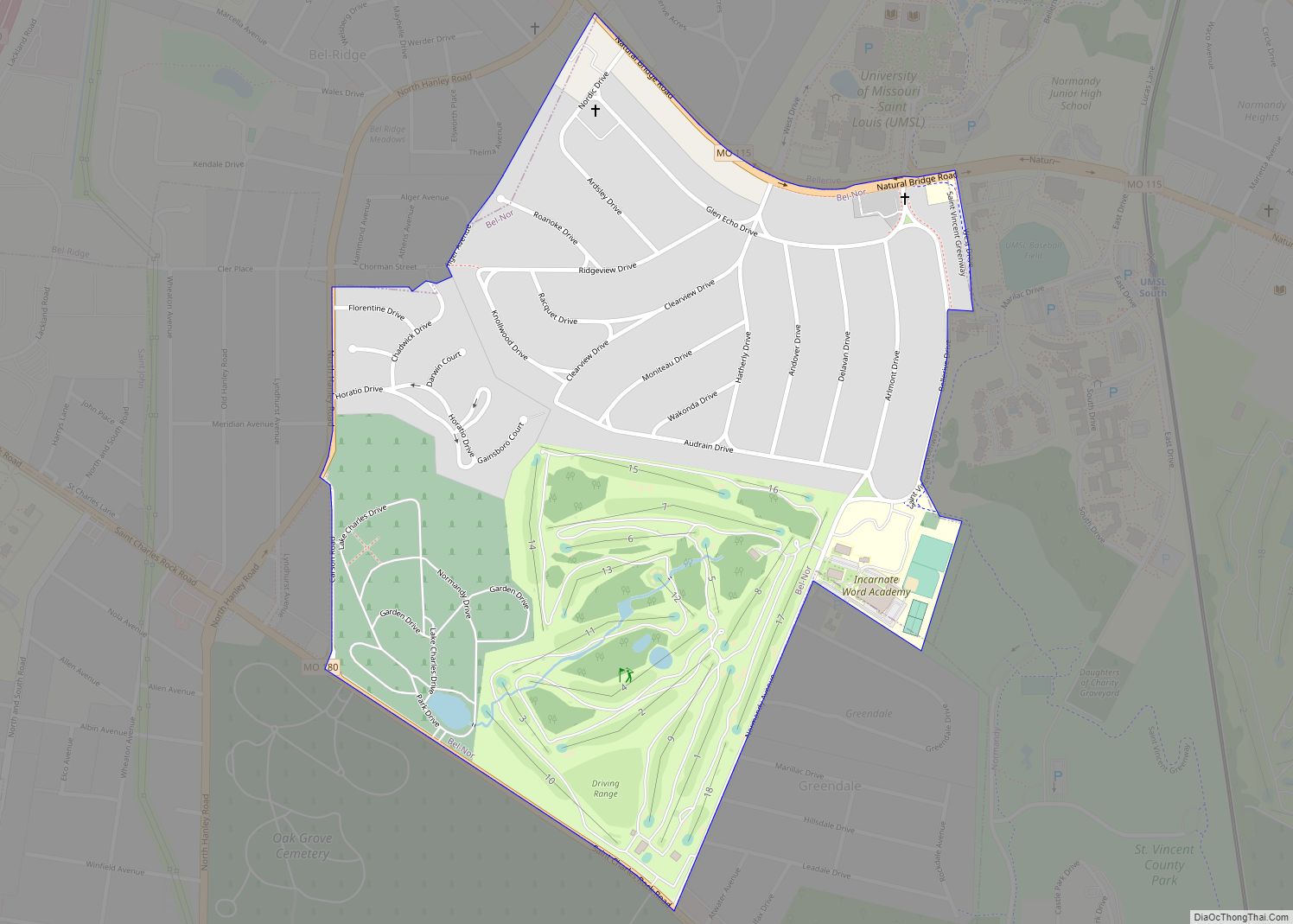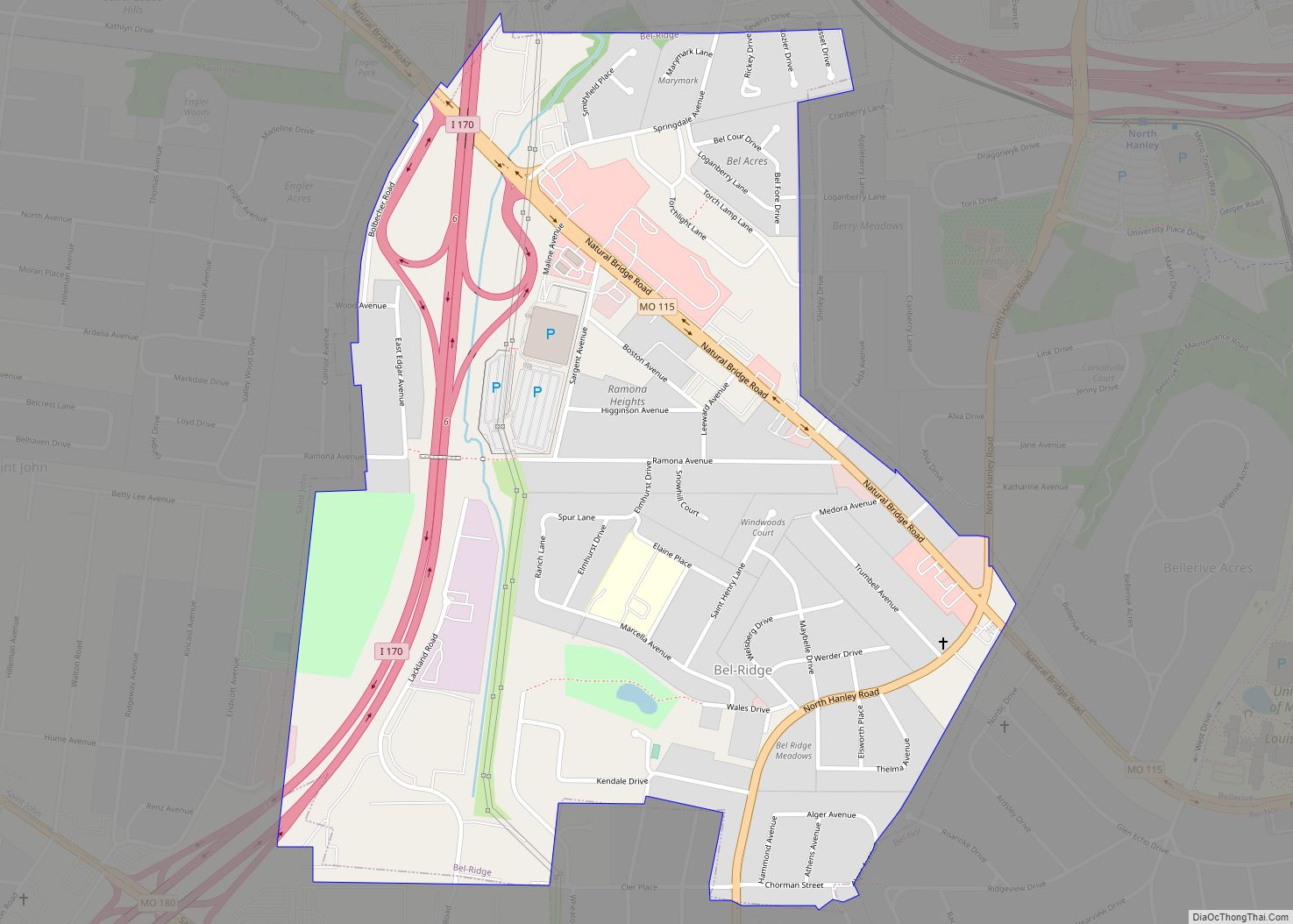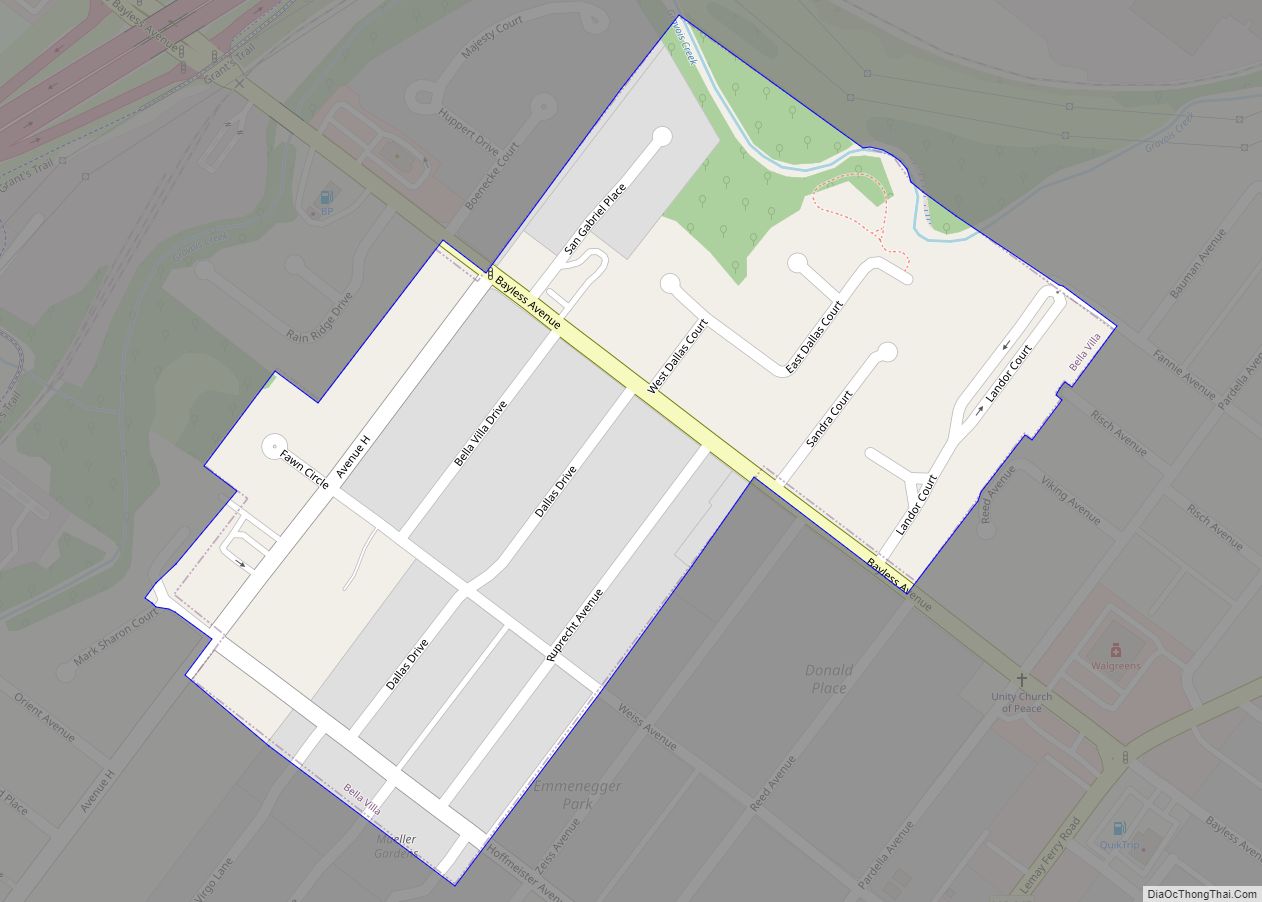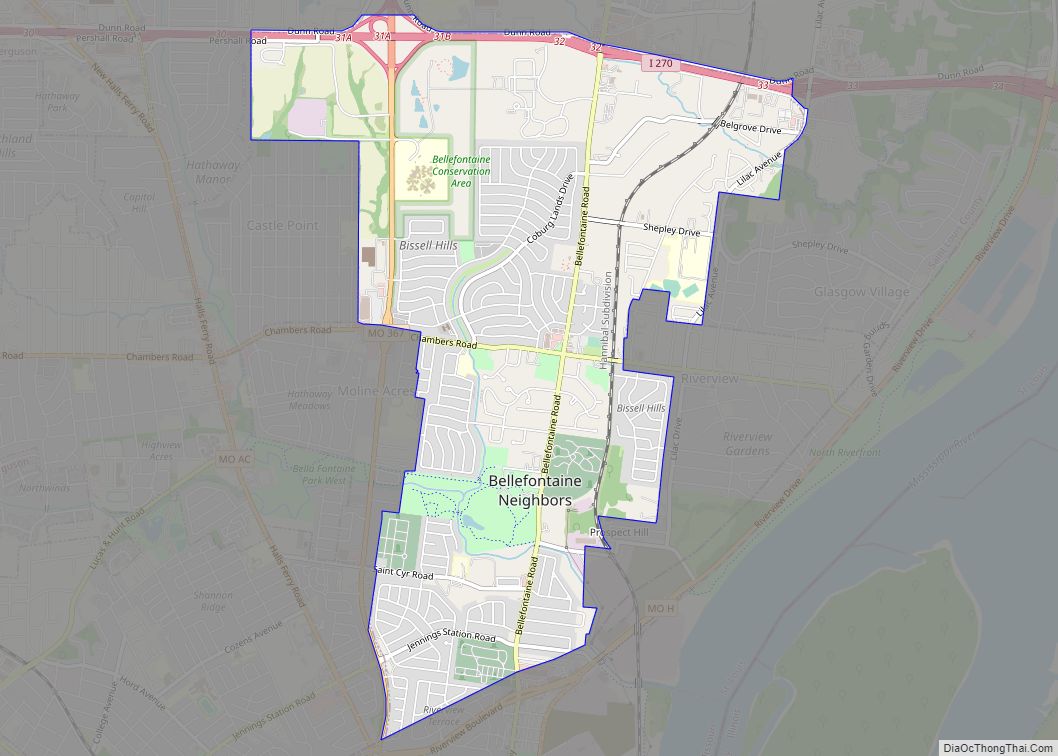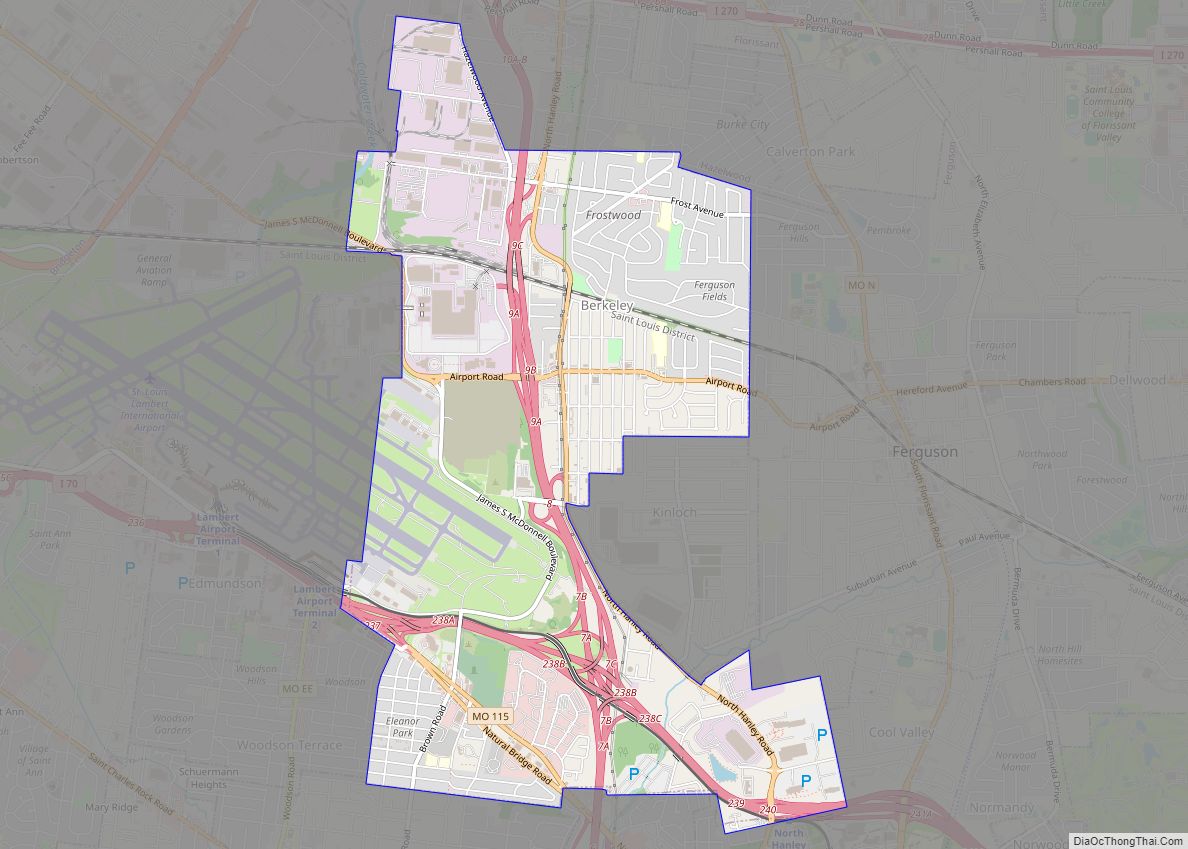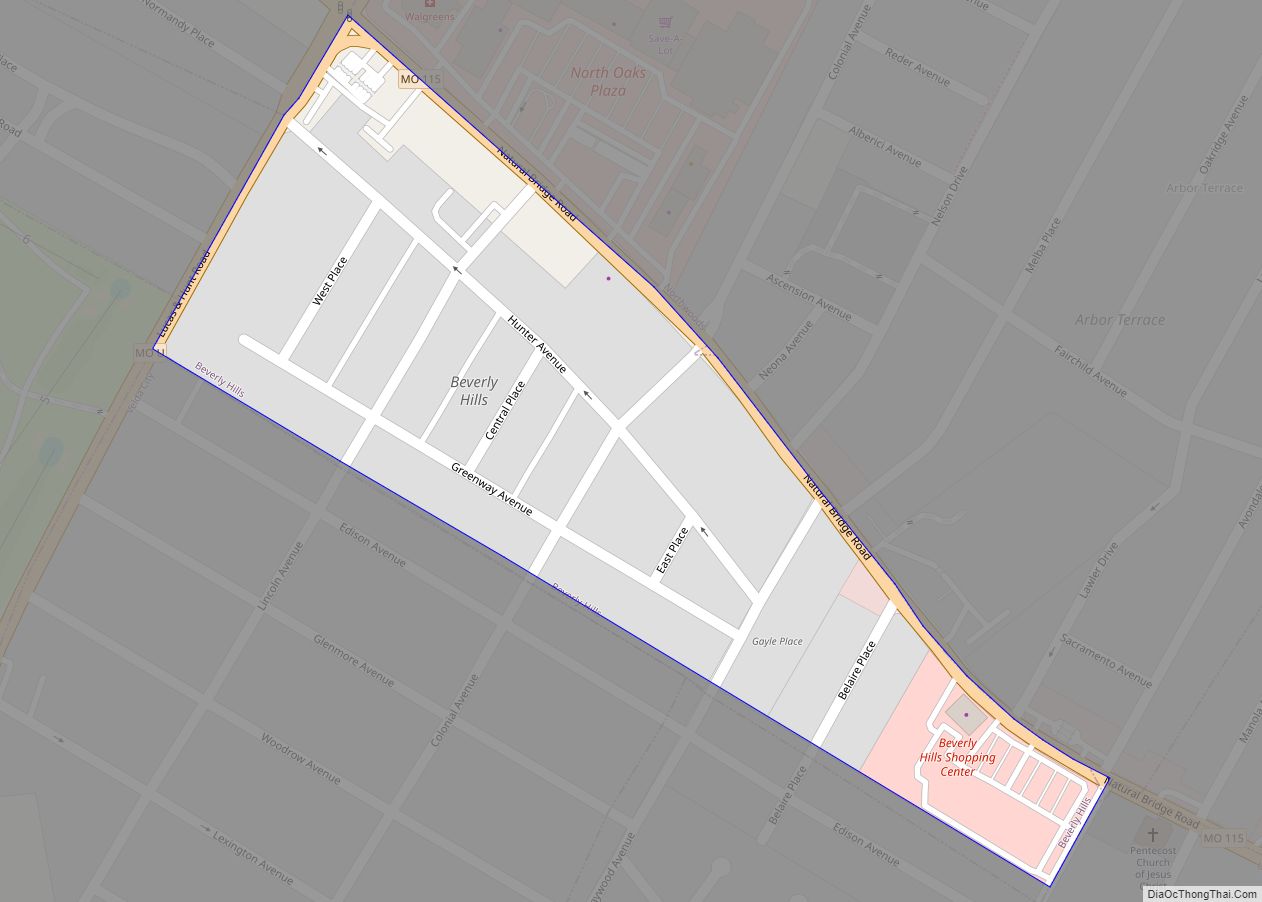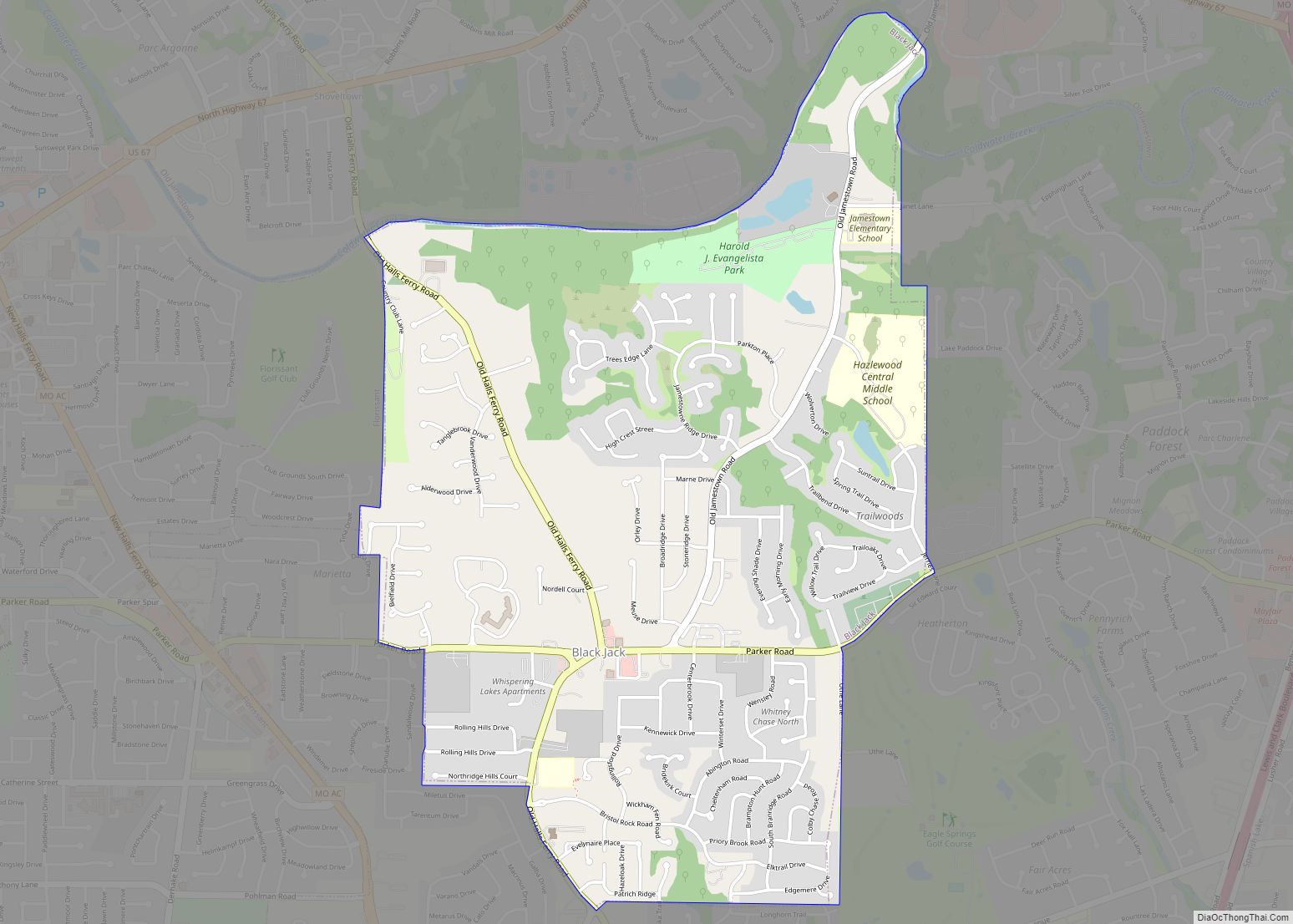Chesterfield is a city in St. Louis County, Missouri, United States. It is a western suburb of St. Louis. As of the 2020 census, the population was 49,999, making it the state’s fourteenth-largest city. The broader valley of Chesterfield was originally referred to as “Gumbo Flats”, derived from its soil, which though very rich and silty, resembled gumbo when wet.
| Name: | Chesterfield city |
|---|---|
| LSAD Code: | 25 |
| LSAD Description: | city (suffix) |
| State: | Missouri |
| County: | St. Louis County |
| Incorporated: | 1988 |
| Elevation: | 515 ft (157 m) |
| Total Area: | 33.84 sq mi (87.64 km²) |
| Land Area: | 31.84 sq mi (82.45 km²) |
| Water Area: | 2.00 sq mi (5.19 km²) |
| Total Population: | 49,999 |
| Population Density: | 1,570.57/sq mi (606.40/km²) |
| Area code: | 314, 636 |
| FIPS code: | 2913600 |
| GNISfeature ID: | 2393821 |
| Website: | www.chesterfield.mo.us |
Online Interactive Map
Click on ![]() to view map in "full screen" mode.
to view map in "full screen" mode.
Chesterfield location map. Where is Chesterfield city?
History
Ancient history
Present-day Chesterfield is known to have been a site of Native American inhabitation for thousands of years. A site in western Chesterfield containing artwork and carvings has been dated as 4,000 years old. A Mississippian site, dated to around the year 1000, containing the remains of what have been identified as a market and ceremonial center, is also located in modern Chesterfield.
Historical communities
The present-day city of Chesterfield is made up of several smaller historical communities, including:
- Bellefontaine (French for “beautiful spring”), or as the locals called it, “Hilltown”, dates to about 1837 with the arrival of August Hill. The first post office was established as Bellemonte (“beautiful mountain”) in 1851. Eighteen years later, in 1869, the town and post office name were both changed to Bellefontaine. Rinkel’s Market was a familiar landmark for years, at the intersection of present-day Olive Boulevard and Chesterfield Parkway (where a Mellow Mushroom pizza restaurant is now).
- The town of Lake started out as “Hog Hollow,” in about 1850. The post office was established as Hog Hollow in 1871, but a year later the town’s name was changed to what some thought was the more suitable name of Lake. Zierenberg’s General Merchandise and Saloon (built around 1880) was a well-known landmark at the 18-mile marker on Olive Street Road. The original structure was destroyed by fire in 1918. It was replaced by the existing structure on the same site (Olive Boulevard and Hog Hollow Road).
- Gumbo is located in the valley at the present intersection of Chesterfield Airport Road and Long Road. A notable landmark (until it was razed in 1998) was the old Twenty Five Mile House – so named because of its distance from downtown St. Louis. Gumbo’s name derived from its soil, which though very rich and silty, when wet became gumbo mud. A substance very similar to gravel was made from Gumbo mud and used for streets and sidewalks in Forest Park during the 1904 World’s Fair. Gumbo’s post office operated from 1882 to 1907.
- Monarch (earlier called Atherton, then Eatherton) was one of the settlements that sprang up along the Chicago, Rock Island and Pacific rail line when it came through the valley in the late 1870s. William Sutton’s General Store stood on the northwest corner of Eatherton and Centaur Roads. Their post office operated from 1895 to 1907, when the mail was transferred to Chesterfield. A well-known residence in Monarch was named “The Shadows”; it still survives, with a commanding view from its bluff site.
- Bonhomme, which is French for “good man,” is located at the extreme western end of Olive Street Road. It had a blacksmith shop, grist mill, store, post office and Fenn’s saw mill; but it was all washed away in the late 19th century by the Missouri River. Bonhomme was a popular name in St. Louis County; with Bonhomme streets, roads, creeks, churches and townships still so-named. However, this Bonhomme is the only one that ever had its own post office.
1967 tornado
On January 24, 1967, a violent F4 tornado ripped a 21-mile (34 km) path of destruction across St. Louis County. It was the fourth-worst tornado to hit the St. Louis metro area and the most recent F4 tornado to hit the city. The tornado developed near the Chesterfield Manor nursing home and then moved through River Bend Estates and across northeast St. Louis County.
Incorporation as Chesterfield
The name “Chesterfield” was given by landowner Justus Post who arrived in Missouri in 1815 and began amassing an estate in the location of the present-day city. Post had grown up in Vermont, not far from the town of Chesterfield, New Hampshire, which sits on the border between New Hampshire and Vermont. Although Post eventually left Missouri and moved to Illinois, his chosen placename of “Chesterfield” stuck.
For many years, “Chesterfield” was an all-inclusive place-name for a vast, unincorporated sub-region of western St. Louis County (called “West County” by metro area residents) containing the unincorporated historical communities listed above, plus areas now incorporated as cities of their own (e.g., Ballwin). Police and fire protection in the community were fragmented and sporadic, the former provided by St. Louis County. As the population grew, Chesterfield Mall and other retail and commercial real estate developments sprang up; however, many residents were concerned about the lack of quality public services, and that the municipal sales tax benefited the county instead of the community.
An organization was formed calling itself the “Chesterfield Incorporation Study Committee.” Headed by its president, John A. Nuetzel (himself a former president of the River Bend Association, a zoning watchdog group), the members “passed the hat” at neighborhood meetings, engaged legal help, drew up metes and bounds, and forced several failed public votes for incorporation. After a number of years, in 1988, The City of Chesterfield was finally established by its residents, and has thrived as perhaps West County’s premier residential, business, retail, and transportation center.
Flood of 1993
On July 30, 1993, the levee that protected Gumbo Flats (now known as the Chesterfield Valley) from the Missouri River failed. This was the first time the levee had failed since 1935. The town was told to evacuate, and the whole area of Gumbo Flats was flooded by feet of water. Today, the area has become the Chesterfield Commons retail area.
Chesterfield Road Map
Chesterfield city Satellite Map
Geography
Chesterfield is located approximately 25 miles (40 km) west of St. Louis. According to the United States Census Bureau, the city has a total area of 33.52 square miles (86.82 km), of which 31.78 square miles (82.31 km) is land and 1.74 square miles (4.51 km) is water.
Portions of Chesterfield are located in the floodplain of the Missouri River, now known as Chesterfield Valley, formerly as Gumbo Flats. Here several small creeks empty into the Missouri River (Caulks Creek and Bonhomme Creek). This area was submerged during the Great Flood of 1993; higher levees built since then have led to extensive commercial development in the valley. Chesterfield Valley is the location of Spirit of St. Louis Airport, used for corporate aviation, as well as the longest outdoor strip mall in America.
See also
Map of Missouri State and its subdivision:- Adair
- Andrew
- Atchison
- Audrain
- Barry
- Barton
- Bates
- Benton
- Bollinger
- Boone
- Buchanan
- Butler
- Caldwell
- Callaway
- Camden
- Cape Girardeau
- Carroll
- Carter
- Cass
- Cedar
- Chariton
- Christian
- Clark
- Clay
- Clinton
- Cole
- Cooper
- Crawford
- Dade
- Dallas
- Daviess
- De Kalb
- Dent
- Douglas
- Dunklin
- Franklin
- Gasconade
- Gentry
- Greene
- Grundy
- Harrison
- Henry
- Hickory
- Holt
- Howard
- Howell
- Iron
- Jackson
- Jasper
- Jefferson
- Johnson
- Knox
- Laclede
- Lafayette
- Lawrence
- Lewis
- Lincoln
- Linn
- Livingston
- Macon
- Madison
- Maries
- Marion
- McDonald
- Mercer
- Miller
- Mississippi
- Moniteau
- Monroe
- Montgomery
- Morgan
- New Madrid
- Newton
- Nodaway
- Oregon
- Osage
- Ozark
- Pemiscot
- Perry
- Pettis
- Phelps
- Pike
- Platte
- Polk
- Pulaski
- Putnam
- Ralls
- Randolph
- Ray
- Reynolds
- Ripley
- Saint Charles
- Saint Clair
- Saint Francois
- Saint Louis
- Sainte Genevieve
- Saline
- Schuyler
- Scotland
- Scott
- Shannon
- Shelby
- Stoddard
- Stone
- Sullivan
- Taney
- Texas
- Vernon
- Warren
- Washington
- Wayne
- Webster
- Worth
- Wright
- Alabama
- Alaska
- Arizona
- Arkansas
- California
- Colorado
- Connecticut
- Delaware
- District of Columbia
- Florida
- Georgia
- Hawaii
- Idaho
- Illinois
- Indiana
- Iowa
- Kansas
- Kentucky
- Louisiana
- Maine
- Maryland
- Massachusetts
- Michigan
- Minnesota
- Mississippi
- Missouri
- Montana
- Nebraska
- Nevada
- New Hampshire
- New Jersey
- New Mexico
- New York
- North Carolina
- North Dakota
- Ohio
- Oklahoma
- Oregon
- Pennsylvania
- Rhode Island
- South Carolina
- South Dakota
- Tennessee
- Texas
- Utah
- Vermont
- Virginia
- Washington
- West Virginia
- Wisconsin
- Wyoming
